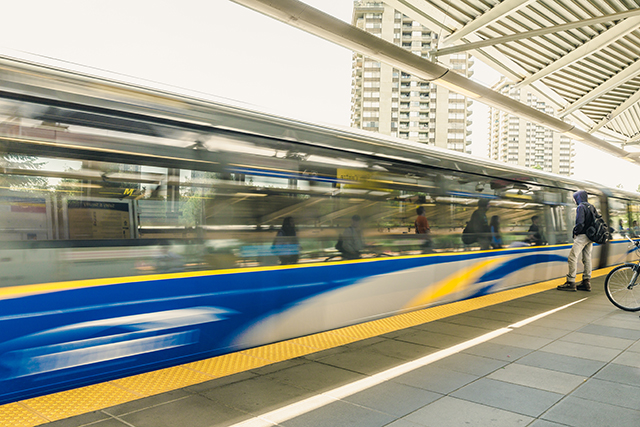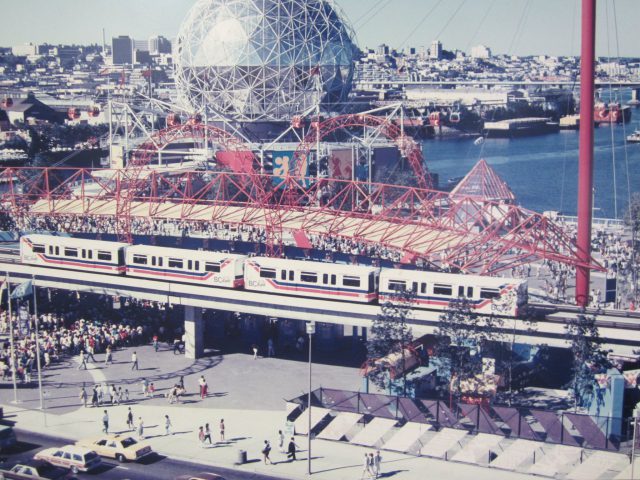On the Right Track with SkyTrain
On the Right Track with SkyTrain

Why it’s still the right fit for Metro Vancouver’s busiest corridors
I am often asked my thoughts about the prospects of automated transport, a topic regularly in the news. People want to know when it will come and what it will mean for mobility in our region. My somewhat tongue-in-cheek answer is, “Well, we’ve had automation in our region for over 30 years. In fact, we’re leaders in this technology.”
When SkyTrain was launched in 1986 for Expo, it was one of the world’s first driverless, automated rapid-transit systems. Since that time, our automated SkyTrain system has served the region well—with a record 160 million boardings in 2018—and we are poised to expand it even further.
Although SkyTrain has had an excellent performance record over the past three decades, questions have been raised about whether SkyTrain is still the right fit for the region. Concerns range from the hefty, upfront price tag to the assumption that there’s a lack of options when it comes to procuring new rail cars for SkyTrain expansion plans. As a 25-year public transit veteran who has travelled on many systems around the world, I can say with confidence that Metro Vancouver’s automated SkyTrain system remains the right choice for high-demand transit corridors.
At the heart of our SkyTrain system is a technology called Communication Based Train Control (CBTC), the system that allows our trains to be driverless. Being an early adopter of this automated technology has paid off in several ways.
First, automation is economical. Without the need to staff trains over the past 30 years, we’ve been able to invest additional resources into the maintenance and expansion of the system. Second, CBTC technology improves rail safety because it removes the potential for human error. Third, automation increases capacity. Because trains don’t need to be kept at a distance that accounts for human error or momentary distraction, we can run trains more frequently than conventional rapid transit, which allows us to move more people, more quickly.

In 1986, only two other transit agencies had automated, unattended trains, including Kobe, Japan (1981) and Lille, France (1983). Today, the benefits of automated technology are being recognized around the globe. As of January 2019, there are more than 65 fully-automated lines in 42 cities worldwide that account for 1,052 kilometres in operation. In addition, many agencies with established systems are choosing to retrofit to automated train-control.
The interest in automated technology has prompted the industry to evolve and expand. For us, the main benefit is that there are now more manufacturing options when it comes to procuring new SkyTrain cars or building out the infrastructure. While options were limited in the past, there are several companies today who can build our fleet and grade-separated infrastructure.
For example, as part of our transit expansion program we’re currently procuring more than 200 SkyTrain cars.
While the vehicles and technology must be tailored to each agency’s system—for example, the Expo and Millennium lines use linear-induction motors—the automated technology is no longer unique to a handful of systems and several companies are now capable of building our fleet.
Automated train-control systems are growing in popularity because they’re an effective investment. That’s why we’re using SkyTrain to expand our rail rapid-transit system South of the Fraser and along the Broadway corridor. As more and more agencies look to this technology, it underscores the value of this technology and confirms that we made the right choice back in 1986.
Kevin Desmond, Former TransLink CEO
Kevin Desmond is the former Chief Executive Officer of TransLink, Metro Vancouver’s transportation authority that moves 500,000 people every day. He oversaw planning, financing, and management of a region-wide multimodal transit network that includes bus, rapid transit, passenger ferry, para-transit, and commuter train service, with over 8,000 employees.





